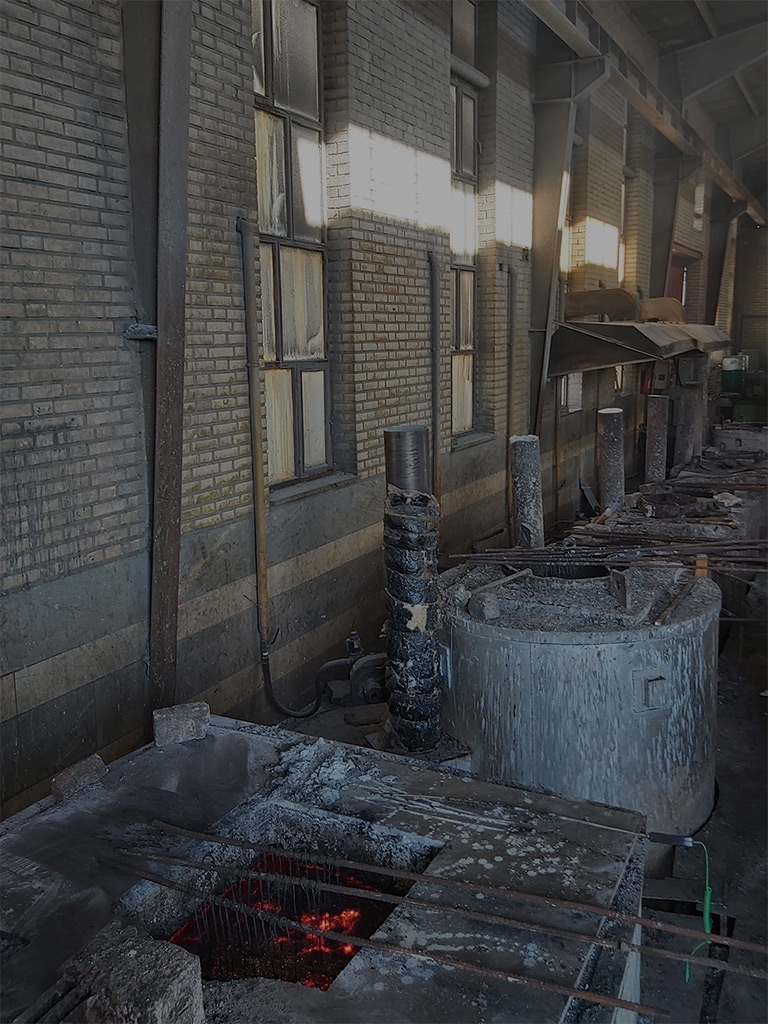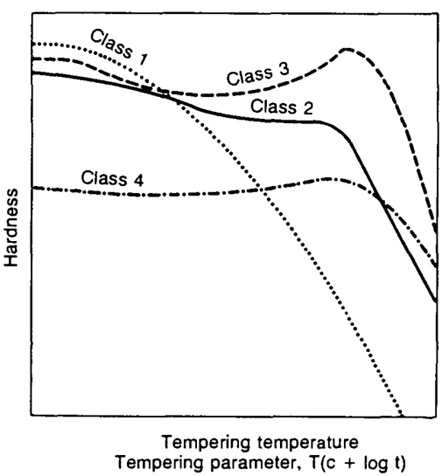Tempering, the final heat treatment step applied to tool steels, is defined as the heating of a martensitic or hardened steel to some temperature below the Ai temperature; this step produces the final structure and mechanical properties of a hardened steel. The preceding austenitizing and quenching steps of hardening are designed to produce the as-quenched microstructures that can be tailored by tempering to produce the desired performance of a given tool steel. As-quenched microstructures consist of martensite and retained austenite, produced by cooling through the Ms from the austenitizing temperature, and alloy carbides retained during austenitizing.
In carbon and low-alloy steels, the primary purpose of tempering is to raise the toughness and fracture resistance of hardened steels from the very low values characteristic of as-quenched martensite. In more highly alloyed tool steels, tempering can be used not only to increase hardness but also to produce a dispersion of stable alloy carbides resistant to coarsening during exposure to heating. Such coarsening would lower hardness and limit tool life during high-speed machining or high-temperature forging.
Figure below shows schematically hardness as a function of tempering temperature, assuming a constant time, or as a function of a tempering parameter that includes both tempering temperature and time as variables for four classes of tempering behavior. Class 1 behavior is typical of carbon and low-alloy steels. Hardness decreases continuously with increasing tempering; concurrently, toughness increases—except in certain temperature ranges where embrittlement phenomena develop. Class 2 represents the medium- to high-alloy cold-work die steels in which carbide precipitation and accompanying softening are retarded by the alloy additions. Class 3 tempering behavior is typical of the highly alloyed high-speed steels that undergo secondary hardening, a precipitation hardening associated with the precipitation of alloy carbides in tempered martensite. The precipitation of high densities of fine alloy carbides not only retards softening but may also increase hardness to levels equal to or exceeding those in the untempered condition. Class 4 behavior is representative of medium- to high-alloy hot-work die steels in which secondary hardening develops, but the overall hardness is lower than class 3 because of the lower carbon content of these steels.
These microstructural changes, and the mechanisms by which they develop, have been of great interest relative to their importance in creating the final service microstructures of hardened steels.


